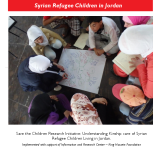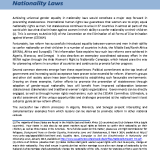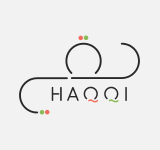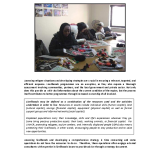united nations high commissioner for refugees
يركز هذا التقرير، الذي نشر من قبل المفوضية السامية لشؤون اللاجئين، على المساواة بين الجنسين في قوانين الجنسية، وبخاصة المساواة بين الرجل والمرأة في منح الجنسية لأطفالهم. ويوضح التقرير كيف تحققت
أُجري هذا التقرير على مدار أربعة أشهر في لبنان والأردن;; ويركز على التحديات المؤلمة التي تواجه أطفال اللاجئين السوريين كل يوم. والهدف من هذا التقرير هو إعداد تقرير قائم على الأدلة من زاوية إنسانية;; تستهدف قاعدة عريضة من الجماهير لرفع الوعي بشأن التحديات التي تواجه حماية الأطفال;; وإعطاء فكرة عن كيفية استجابة وكالة الأمم المتحدة وشركائها;; وتسليط الضوء على بعض الفجوات التي تتطلب اهتماماً عاجلاً من جانب المجتمع الدولي. وتم اعتماد منهجية تتألف من مراجعة مكتبية للتقارير والتقييمات القائمة;; إلى جانب جمع البيانات وإجراء بحث ميداني في كل من المواقع الحضرية والريفية وفي المخيمات. وقد تم جمع المعلومات من خلال مناقشات مجموعة التركيز والمقابلات التي أجريت مع الأطفال اللاجئين وعائلاتهم;; إلى جانب اللاجئين العاملين مع الأطفال داخل مجتمعاتهم وموظفي المفوضية وغيرها من المنظمات العاملة مع الأطفال اللاجئين.
تركز الدراسة على الإجراءات المقيدة الجديدة التي فرضتها كل من مصر والأردن لمنع دخول مزيد من اللاجئين. أما سوريا التي تؤوي زهاء مليون عراقي;; فترفض منح باحثي هيومن رايتس ووتش الذين يريدون توثيق أوضاع اللاجئين تأشيرات دخول إليها. وتقوم المملكة العربية السعودية ببناء سياج مزوّد بتكنولوجيا متقدمة تبلغ كلفته 7 مليار دولار على امتداد حدودها مع العراق لمنع دخول العراقيين;; في حين ترفض الكويت طالبي اللجوء العراقيين رفضاً قاطعاً.
This report outlines the regional response plan to Syrian refugees. It gives an overview of the situation of Syrian refugees in Jordan;; the plans and strategies that have be put in place to accommodate them. The overarching priorities in 2013 remain the registration and documentation of new arrivals;; basic protection;; and life-saving activities;; specifically: the establishment of adequate camp infrastructure;; provision of non-food items (NFI) to new arrivals in camps;; access to health care;; food assistance;; access to clean water in camps;; and physical protection including response to and prevention of sexual and gender-based violence (SgBV). Other essential activities include the identification and protection of unaccompanied and separated children (UA/SC);; access to education services and subsistence aid to the most vulnerable among the non-camp refugee population;; and improving access to water in refugee- hosting communities.
This paper looks at how UNHCR has gone about creating;; maintaining and expanding protection space for Iraqi refugees in the context of the Jordan;; Syria and Lebanon. The paper is divided into two parts. The first touches on UNHCR's mandate and the 1951 Convention Relating to the Status of Refugees;; which together provided;; for the first time;; a formal structure for the protection of refugees under international law. The second part of the paper turns attention to the Iraqi displacement to Syria;; Jordan and Lebanon. It begins by outlining the protection environment as regards refugees in the region and indicates the protection needs faced by Iraqi refugees;; or rather rights which remain be realized by Iraqi refugees in these countries.
This document by the United Nations High Commissioner for Refugees (UNHCR) outlines Jordan operations plan for the year 2007. It stars with an overview of the operational environment including the number and characteristics of UNHCR beneficiary population;; and moves on to outlining operational goals.
Assessing refugee situations and developing strategies are crucial in ensuring a relevant;; targeted;; and efficient response. Livelihoods programmes are no exception;; as they also require a thorough assessment involving communities;; partners;; and the local government and private sector. Not only does this provide us with vital information about the current condition of the region;; but the process itself contributes to better programmes through increased ownership of all involved. UNHCR Jordan developed a quality strategy using their internal resources and networks. This is a story about their experience and the lessons learnt in the process.








